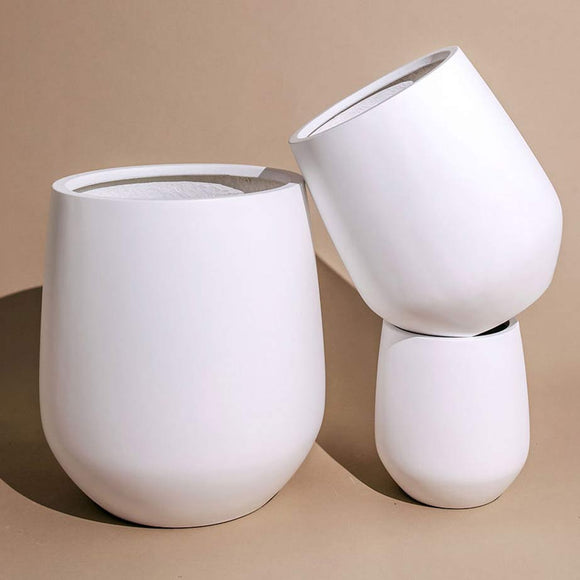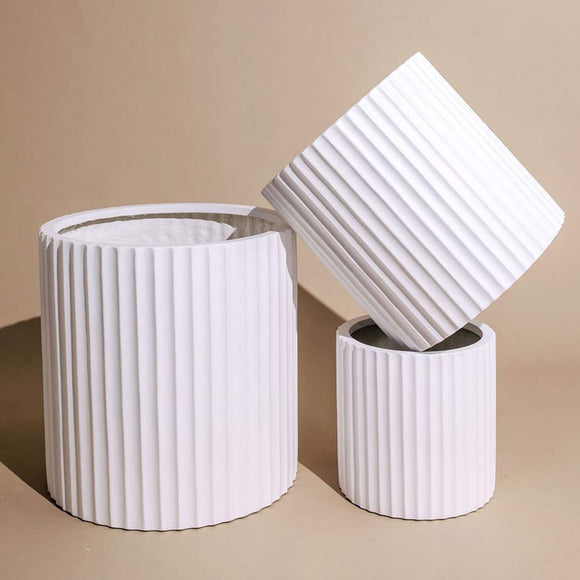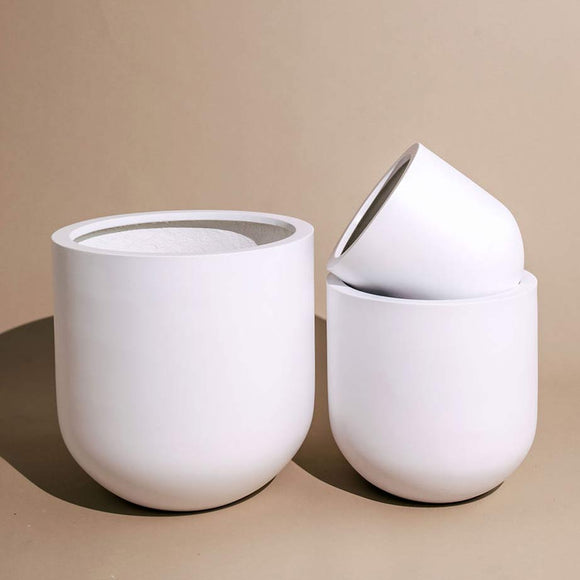20 Fascinating Facts About Your Indoor Plants
Indoor plants can breathe life and infuse natural beauty into our homes, creating a tranquil and vibrant atmosphere that enhances our living spaces. Beyond their aesthetic appeal, these green companions offer many benefits contributing to our overall well-being. Here are 20 fascinating facts about our plant pals, giving us a deeper appreciation.

1. Monstera deliciosa: Australia's Beloved Indoor Plant: The Monstera deliciosa holds the crown as the most purchased indoor plant in Australia to date. Its iconic, fenestrated leaves have captured the hearts of plant enthusiasts nationwide.
2. Exotic Origins of Fiddle Leaf Fig, Philodendron, and Monstera: Did you know that popular indoor plants like the Fiddle Leaf Fig, Philodendron, and Monstera are originally outdoor plants native to West Africa, the Caribbean, and Mexico, respectively? These plants have thrived indoors due to their adaptability and striking aesthetics.
3. Fiddle Leaf Fig: A Global Online Sensation: Among all plants worldwide, the Fiddle Leaf Fig takes the crown for the most online searches regarding plant care issues. Its large, lush leaves make it a favourite, but its care requirements can sometimes be challenging.
4. The Perils of Dust on Indoor Plants: Dust can do more harm than you might think. It can smother your indoor plants by clogging their pores, hindering photosynthesis, and impeding their overall health. Regularly wiping down leaves helps keep them vibrant and thriving.
5. Air-Purifying Powerhouses: Looking to improve your indoor air quality? Consider incorporating Peace Lilies, Devil’s Ivy, bamboo plants, and Mother-in-law’s Tongue into your plant collection. These plants are known for their excellent air-purifying abilities and carbon dioxide absorption.
6. Secret Conversations Among Plants: Plants have their own language! When under attack, facing overcrowding, or adapting to changes in weather or watering conditions, they communicate with each other through chemical signals. This fascinating phenomenon helps them survive and thrive.

A stunning plant cluster in Thomas pots.
7. The Power of Clustering: Indoor plants grow healthier and faster when clustered together. Additionally, periodically moving them outdoors allows them to benefit from natural sunlight and fresh air, promoting their overall well-being.
8. Preventing the Spread of Disease: If one of your plants becomes infected with a disease or pest, it's crucial to isolate it from your healthy plants. Doing so can prevent the spread and protect the well-being of your entire plant collection.
9. Green Therapy for Mind and Body: Indoor plants offer more than just visual appeal. Numerous studies have shown they have therapeutic benefits, such as reducing blood pressure, decreasing stress levels, and increasing productivity. Incorporating plants into your living space can significantly enhance your well-being.
10. Healing Power of Plants in Hospitals: Hospitals that incorporate an abundance of plants and flowers create a healing environment. Patients who spend time in such spaces tend to experience faster recovery from surgery and require less recovery from illness.

11. Melodies That Plants Love: Plants respond positively to certain vibrations and sounds. Talking to them and playing jazz or classical music has been shown to stimulate their growth and well-being. So go ahead, share your favourite tunes with your leafy companions!
12. Energy-Efficient Plant Homes: Homes adorned with an abundance of indoor plants tend to require less heating and cooling. The plants act as natural insulators, reducing energy consumption and creating a more sustainable living environment.
13. Sound-Reducing Greenery: Plants also serve as nature's sound absorbers, helping to reduce noise pollution in indoor spaces. Opt for plants with larger stems and broader leaves, as they are more effective in absorbing surrounding sounds.
14. Natural Humidifiers: Indoor plants increase humidity levels, which is beneficial for individuals suffering from dry or itchy skin. Plants create a more comfortable living environment by introducing moisture into the air.
15. Beware of Toxic Indoor Plants: While plants offer numerous benefits, it's essential to be aware of potential risks. Some indoor plants produce natural compounds such as calcium oxalates, alkaloids, cycasin, and saponin. Ingesting these compounds can be toxic to humans and animals, leading to allergic reactions, vomiting, and diarrhea. Always research the toxicity of plants before bringing them into your home, especially if you have pets or young children.

16. Pet-Friendly Indoor Plants: If you're a pet owner, you'll want to ensure the safety of your furry friends. Opt for pet-friendly indoor plants such as Spider Plants, Bird’s Nest and Boston Ferns, Prayer Plants, and Calatheas. These plants add beauty to your space without harming your pets' health.
17. A Garden in Your Kitchen: You can grow more than herbs indoors. Vegetables like carrots, lettuce, and various herbs can be cultivated in pots or even in vessels of water. Embrace your green thumb and enjoy homegrown produce all year round.
18. The Perils of Overwatering: Overwatering remains the number one cause of indoor plant death. Simply poke your finger into the soil to determine if your plant needs watering. If it feels dry up to your first knuckle, it's time to water. Remember, moderation is key.
19. The Mysteries of Leaf Changes: Contrary to popular belief, indoor plants don't always wilt, drop leaves, or turn yellow when unwell or dying. Sometimes, these changes occur naturally, especially during colder months or when the plant focuses on producing new growth. Understanding these cycles can alleviate unnecessary worry and help you provide the best care for your indoor plants.

20. Carnivorous Plants: There are plants that have evolved to trap and consume insects and other small organisms to supplement their nutrient intake. Examples include the Venus flytrap, pitcher plants, and sundews.
















